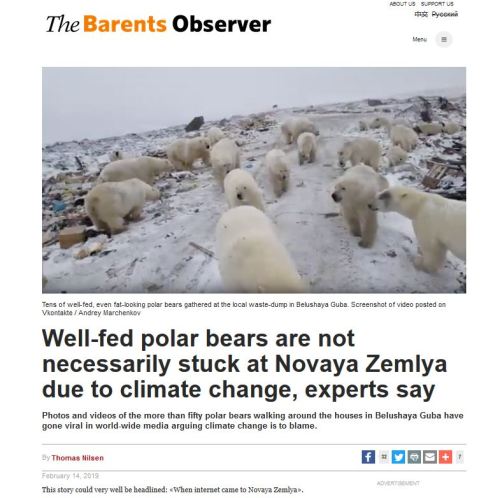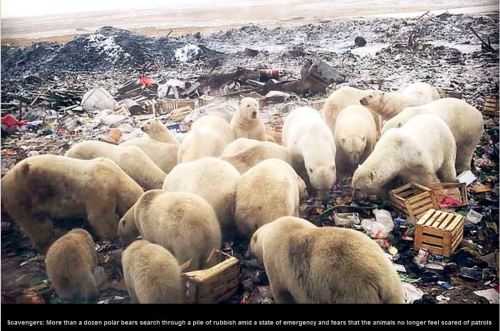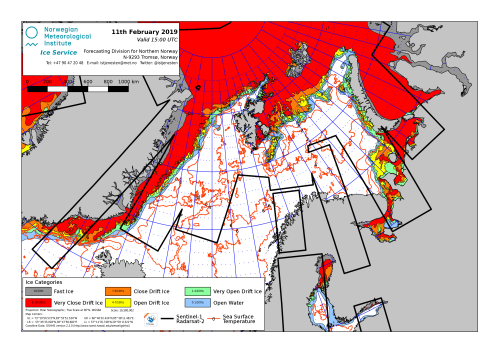--------
It's worse than we thought, says the Guardian:

Enlarged
Greenland is melting faster than scientists previously thought, with the pace of ice loss increasing four-fold since 2003, new research has found.
Enormous glaciers in Greenland are depositing ever larger chunks of ice into the Atlantic ocean, where it melts. But scientists have found that the largest ice loss in the decade from 2003 actually occurred in the southwest region of the island, which is largely glacier-free.
This suggests surface ice is simply melting as global temperatures rise, causing gushing rivers of meltwater to flow into the ocean and push up sea levels. South-west Greenland, not previously thought of as a source of woe for coastal cities, is set to "become a major future contributor to sea level rise" the research states.
"We knew we had one big problem with increasing rates of ice discharge by some large outlet glaciers," said Michael Bevis, lead author of the paper (no doubt with Butthead) and a professor of geodynamics at Ohio State University. "But now we recognize a second serious problem: increasingly, large amounts of ice mass are going to leave as meltwater, as rivers that flow into the sea.
The research provides fresh evidence of the dangers posed to vulnerable coastal places as diverse as Miami, Shanghai, Bangladesh and various Pacific islands as climate change shrinks the world's land-based ice.
"The only thing we can do is adapt and mitigate further global warming - it's too late for there to be no effect," Bevis said. "This is going to cause additional sea level rise. We are watching the ice sheet hit a tipping point.
"We're going to see faster and faster sea level rise for the foreseeable future. Once you hit that tipping point, the only question is: How severe does it get?"
The study, published in Proceedings of the National Academy of Sciences, used data from NASA's gravity recovery and climate experiment (known as Grace) and GPS stations scattered across Greenland to analyze changes in ice mass.
This showed that Greenland lost around 280bn tons of ice per year between 2002 and 2016, enough to raise the worldwide sea level by 0.03 inches annually. If all of Greenland's vast ice sheet, 3km thick in places, was to melt, global sea levels would rise by seven meters, or more than 20ft, drowning most coastal settlements.

Enlarged
When the long term numbers are not scary enough, concentrate on one year's weather instead!
I will explain.
Science Daily has more detail on the Bevis paper here. For some reason, it does not appear on the PNAS site yet.
Science Daily elaborate on the "faster than 2003" claim:
Bevis' team used data from GRACE and from GPS stations scattered around Greenland's coast to identify changes in ice mass. The patterns they found show an alarming trend - by 2012, ice was being lost at nearly four times the rate that prevailed in 2003.
Bevis said a natural weather phenomenon - the North Atlantic Oscillation, which brings warmer air to West Greenland, as well as clearer skies and more solar radiation - was building on man-made climate change to cause unprecedented levels of melting and runoff. Global atmospheric warming enhances summertime melting, especially in the southwest. The North Atlantic Oscillation is a natural - if erratic - cycle that causes ice to melt under normal circumstances. When combined with man-made global warming, though, the effects are supercharged.
"These oscillations have been happening forever," Bevis said. "So why only now are they causing this massive melt? It's because the atmosphere is, at its baseline, warmer. The transient warming driven by the North Atlantic Oscillation was riding on top of more sustained, global warming."
But what happened in 2012?
Due to that weather event, the NAO, Greenland experienced an unusually mild year, with in particular a sunny summer.
Bevis asks:
"These oscillations have been happening forever. So why only now are they causing this massive melt? "
Because we have only been monitoring the melt for the last decade or two!
We know that global sea level rise was just as great in the early to mid 20th century, and there is therefore no evidence whatsoever that melting of the Greenland ice sheet was not just as great back then.

Enlarged
Unsurprisingly, therefore, the Surface Mass Balance of the Greenland ice sheet shrank slightly, due to both reduced snowfall and ice melt:

Enlarged

Enlarged
However, that was the exception. Last year, for instance, the SMB grew much more than the long term mean, as it did the year before.
Bevis' claim that ice loss in 2012 was greater than in 2003 is based on one year's weather, and not the long term trend.
It is worth emphasizing here that the SMB reflects both snowfall and ice melt, but not calving of glaciers. It is, of course, ice melt that Bevis is mainly concerned about here.
As we can see from the above temperature chart for SW Greenland, with the exception of 2012, temperatures since 2003 are little different to the 1920s to 40s, the last time the AMO was in warm phase, as it presently is.
There is simply no evidence at all of Greenland's climate getting any warmer over the long term.
As for the lurid threats of multi meter sea level rise, according to DMI loss of ice from the Greenland ice sheet (from all causes) since 2003 has accounted for about 0.65mm a year of global sea level rise, little more than 2 inches per century.
------------
Media Ignore Inconvenient Truths When Pushing Polar Bear Invasion Stories
This story could very well be headlined: "When the internet came to Novaya Zemlya."
Locals started to post photos and video of the more than 50 polar bears in their neighborhood.
Over the last week, social media, as well as online newspapers globally, have gone mad over the news coming out from one of the remotest towns on the planet, the closed military settlement of Belushaya Guba.
The little-known town on the Russian Arctic archipelago has since last autumn been struggling with polar bears walking the streets and around the corners of the apartment - and office buildings. Even walking by a baby-stroller inside an entrance, one of the video-recordings show.
Regional authorities have declared a state of emergency after the bears no longer react to noise - and light signals from guards trying to scare them off.
Belushaya Guba, like the entire Novaya Zemlya, is closed off military area. The newly upgraded air base Rogachevo is just a few kilometers outside of town.
But why don't the bears want to leave the settlement? As previously reported by the Barents Observer, the Kara Sea off the east coast of Novaya Zemlya is this winter packed with very close drift ice.
Now, it appears like the human food-waste has a much more central role in the story than just the warming Arctic.
But first a look at the many media, including the Barents Observer, that last week jumped to conclusions pointing at climate changes when the stories about polar bears in trouble, or making trouble, found its way to global newsrooms.
The blog portal Polar Bear Science has collected links to many of the newspapers reporting about the sensational images from Novaya Zemlya.
The Guardian writes, "What polar bears in a Russian apartment block reveal about the climate crisis."

guardian polar bear invasion
The Washington Post writes under the headline, "A 'mass invasion' of polar bears is terrorizing an island town. Climate change is to blame" and the CBC makes a similar conclusion, headlining its article: "Russian Arctic town overrun by polar bears, climate change blamed."
Mats Forsberg has sailed expeditions since 1982 and has assisted in TV productions about the polar bears in the Arctic. He has first-hand knowledge of polar bears' behavior.
"These bears are well-fed," he says to the Barents Observer after reviewing some of the videos.
"I would say these bears are not hanging around the houses due to climate changes. They have a huge amount of food dumped into nature by humans," Forsberg says and concludes: "This is purely an on-site human-made problem."
Some of the videos posted by local residents on Vkontakte show how tens of polar bears are eating garbage at the local dump site in Belushaya Guba. The bears actually look fat.
Evaluating media's reporting, the blog site Polar Bear Science concludes: "Global warming is blamed for the problem but as is so often the case, that claim does not stand up to scrutiny."
The blog is run by Susan Crockford, a zoologist with more than 35 years experience, including published work on the Holocene history of Arctic animals.
from Climate Change Skeptic Blogs via hj on Inoreader http://www.icecap.us/
















